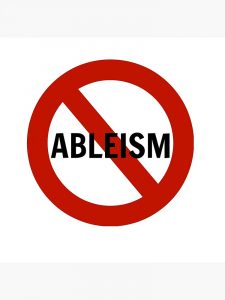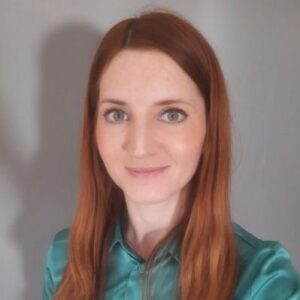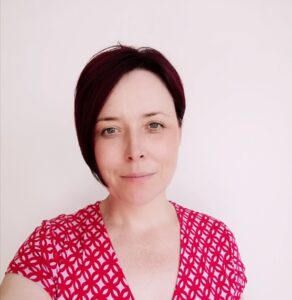The origins of the ‘normal range’ and the Medical Model
In the latter 1800s, Sir Francis Galton, statistician and proponent of eugenics, Darwin’s survival of the fittest and scientific racism, was the first person to apply statistical methods to study human difference, describing the ‘normal distribution’ in human characteristics, determining everything from the average attractiveness to average intelligence. So the concept of norming was borne, the beginnings of society constructing which human characteristics were valuable and which were undesirable, abnormal and atypical. Functional sociologists such as Emile Durkheim (1897), described what norms society needed to be successful. By the 1950s another sociologist Talcott Parsons (1951) developed the theory of the sick role. Parsons believed that members of society should be productive and saw sickness as a form of deviance, only accepted in society if legitimised by a doctor. The ill person had a responsibility to get treatment to get well again. The Medical Model was taking shape and unfortunately, it continues to dominate health and social care, over-spilling its influence into the education of neurodivergent students.
Capitalist values of productivity and efficiency reinforce the outcomes sought in the Medical Model, re-named as the Pathology Paradigm by Dr Nick Walker (2016). Health and education outcomes focus on the individual becoming independent, as if needing help or supports is a bad outcome. Working at the optimum rate and paying attention in standard ways is seen as desirable, with students conditioned and rewarded to adopt unnatural ways of processing to satisfy prejudicial attitudes about how someone contributes and learns. Similarly, the idealised outcome for those with communication disabilities is to aspire for oral language with the rationale that they must be ready for the “real world,” i.e., an ableist society that views anyone who diverges from the norm as someone in need of correction, modification and even, someone who could be distinguished or should be made ‘indistinguishable from their peers’ (Lovaas, 1987).
There is a dichotomy between the expert clinician and the disabled or neurodivergent client
As Speech and Language Therapists the Medical Model has been the dominating model of practice in which we were both confirmed as ‘experts’ in communication. Although we trained 22 years apart, how we understood our role and the role of the patient/client had not changed much in the intervening decades: we had the expert knowledge – we knew how to treat, what to treat, we could prescribe the ‘dosage’ to remediate impediments and we could use our clinical judgment to decide who would and would not benefit from Speech and Language Therapy. We have been given quite a lot of power and privilege in our professional roles.
While we absorbed the Medical Model in our training and subsequent clinical practice, disability and autistic communities were advocating for social justice, basic human rights and equity. After a public campaign, the Disability Discrimination Act 1995, became law in the UK. The Autistic Rights movement, which was underway in the 1990s, grew into the Neurodiversity Movement; a human rights movement seeking to de-pathologise Autistic and other neurodivergent lived experiences, campaigning for autism and all neurodivergence to be seen as natural and valid neuro-cognitive variations and seeking full inclusion for all neurodivergent people (Hughes, 2016).
Our training has not prepared us well to truly understand the wants and needs of our clients who are innately neurodivergent e.g., Autistic, ADHD people, people with Down Syndrome. In training, learning from lived experience was not held on a par with learning from the non-disabled researchers, educators and clinicians. We were not taught that the client was the expert, except at a superficial level. We were not educated in crucial theories such as Critical Theory and other frameworks such as Disability Justice, that would help us develop awareness that the simple Medical Model care pathway, largely one-size-fits-all (with minor tweaks to individualise goals) would not be sufficient to genuinely meet the needs of the diverse populations of people with communication disabilities. We recognise we are still lacking much understanding of communication outside of mainly white western culture.
Realising our knowledge gap and the limitations in our clinical practice, we actively sought to deepen our understanding, directly from disability and autistic communities. In listening to those with communication disabilities, learning from Autistic advocates, Autistic academics and neurodiversity-affirming researchers, we have had to reflect, unlearn much of what we held as truth, discard inherently ableist practices and learn new ways of supporting people with communication needs. As with all healthcare professionals, we recognise the knowledge base never stands still and we thirst for knowledge that emanates from lived experiences and aligns with outcomes that neurodivergent people want, not what the “real world” demands.
A call for change
“In resisting the dominant ableism within the field, the notion of impairment and deficit and resultant normalisation agenda must be deconstructed.” (Milton 2014)
The above quote from Autistic Autism Researcher, Damian Milton, calls us to resist the dominating ableism within the field of Autism and this call also extends to many of the fields of practice within Speech and Language Therapy.

Talila A. Lewis’ (2022) working definition of ableism is:
“A system of assigning value to people’s bodies and minds based on societally constructed ideas of normalcy, productivity, desirability, intelligence, excellence, and fitness. These constructed ideas are rooted in eugenics, anti-Blackness, misogyny, colonialism, imperialism and capitalism. This systemic oppression leads to people and society determining people’s value based on their culture, age, language, appearance, religion, birth or living place, “health/wellness,” and/or their ability to satisfactorily re/produce, “excel,” and “behave.” You do not have to be disabled to experience ableism.”
Calling out ableism in Speech and Language Therapy practice, we need to become aware of the systemic policies, tools and methodologies that perpetuate the notion that there is only one preferred right way to communicate, to think, to process and to learn. We see this in standardised assessments such as IQ tests and language measures, through behavioural interventions, and social skills training.
Standardised assessments, typically standardised on white neurotypical populations, continue to feed discriminatory and oppressive practices that limit Autistic people’s opportunities in accessing the same learning opportunities as non-Autistic peers. Normative assessments cannot measure neurodivergence. Tools that rate the Autistic or learning-disabled child’s communication skills as “high / low functioning” or mild / moderate / severe do not tell us what the person needs. They just indicate how far off this person is from the imaginary, perfectly average, neurotypical equivalent. This sets the neurodivergent person up to be offered harmful, behavioural interventions to try to remediate this perceived “gap” and to “…the autistic lifeworld being invaded by a never-ending tide of interventions that try to eradicate autistic styles of diversity.” (Milton 2014).
Autistic children have been subjected to interventions and assessments based on the ableist teaching that there is only one right type of cognition, language, attention, and sensory development. Behaviourism is the dominant therapy model whereby ‘positive’ behaviours are strengthened, and ‘negative’ behaviours are weakened. We see ableist goals, such as “X will refrain from interrupting others”, “X will engage positively in appropriate play with peers” “X will learn to process and follow directions within the classroom, requiring only one repetition of the instruction,” “X will use an appropriate volume when speaking to peers and adults,” “X will demonstrate joint attention on three occasions during a preferred play activity.”
Behaviourism has infiltrated so much of Speech and Language Therapy practice, we possibly do not even realise that many of our ‘go-to’ programmes involve conditioning and shaping the person’s communication behaviour into a neurotypical performance – in essence, we have been teaching masking, teaching neurodivergent clients to suppress their natural ways of moving and communicating in favour of something that the “real world” would tolerate. We came to realise that we were teaching already vulnerable children to be more compliant, teaching them to be quiet, to not disrupt others, to do what others wanted them to do, regardless of what they needed and how they felt. Classroom visuals such as “stop, check schedule, use your inside voice, sit down, and quiet” teach an already vulnerable child that they do not have a voice and that their comfort does not matter. Social Stories are often used, not as intended, to control ‘inappropriate’ behaviour rather than be a patient and reassuring voice. Sabotage is often used as a key early communication strategy for already stressed toddlers; deliberately obstructing a child from getting their needs met, causing frustration or distress through withholding toys/snacks until they make a sound or look at the adult. This teaches the child that they must jump through hoops to have basic needs met and that getting their needs met is conditional on their performance. We were not taught to honour the disabled child’s body autonomy. The importance of actively seeking consent with a young NonSpeaking child was not emphasised in our training and practice; standard interventions made touching a child’s body to prompt or to teach a skill was an acceptable practice, with no awareness of how this approach reinforces vulnerability.
Hope for the future
The Neurodiversity Paradigm is taking root in clinical practice, emboldened by a wealth of research and many voices within the disability and neurodivergent communities. We are part of a groundswell of like-minded clinicians who are committed to unlearning and shifting to neurodivergent-affirming practice.
We have discarded flawed Autism theories for Autistic-led theories, Dr. Damian Milton’s The Double Empathy Problem (2012) and The Theory of Monotropism (Murray, Lesser & Lawson, 2005) which present a non-pathologising understanding of autistic experience while also pointing to enabling and affirming supports. Strengthening the evidence base and rationale for a different approach, we do not have to look hard; there is a burgeoning amount of researchers such as Noah Sasson and colleagues at University of Texas, Sue Fletcher Watson, Catherine Crompton and colleagues at University of Edinburgh, Sarah Cassidy, Gemma Williams, Monique Botha, Amy Pearson, Kieran Rose and Rebecca Wood, to name but a few.
We can shake off the shackles of ableism. Educationalists and clinicians can adopt neurodivergent affirming practices. Firstly, by changing how they think and talk about neurodivergent people; we can stop referring to ‘disorders’, ‘delays’ and ‘developmental gaps,’ acknowledging a different and valid developmental trajectory where each individual has their own strengths and support needs. We can support people with their communication needs, without the normative framework; there is no need to compare to the ‘normal range’ in order to provide help. We can help people achieve their self-determined outcomes and avoid using reductionist outcomes that are incompatible with acceptance and authenticity. We can be informed by and led by the experts – those with lived experience. All that is required is a mind-shift change, openness to unlearning and stepping out of the comfort zone.



References
Hughes, J. M. (2016). Increasing neurodiversity in disability and social justice advocacy groups [White paper]. Autistic Self Advocacy Network. Available online at: https://autisticadvocacy.org/wp-content/uploads/2016/06/whitepaper-Increasing-Neurodiversity-in-Disability-and-Social-Justice-Advocacy-Groups.pdf
Lewis, T.A. https://www.talilalewis.com/blog/working-definition-of-ableism-january-2022-update
Lovaas OI. Behavioral treatment and normal educational and intellectual functioning in young autistic children. Journal of Consulting and Clinical Psychology. 1987; 55: 3–9. [PubMed] [Google Scholar]
Milton, Damian E.M. (2012) On the ontological status of autism: the ‘double empathy problem’, Disability & Society, 27:6, 883-887, DOI: 10.1080/09687599.2012.710008
Milton, Damian, E.M. (2014) Embodied sociality and the conditioned relativism of dispositional diversity, Autonomy, The Critical Journal of Interdisciplinary Autism Studies
Murray D, Lesser M, Lawson W. Attention, monotropism and the diagnostic criteria for autism. Autism. 2005; 9(2): 139-156. doi:10.1177/1362361305051398
Walker, N. (2016) Autism and the Pathology Paradigm, https://neuroqueer.com/autism-and-the-pathology-paradigm/